(5)ソ連の粛清とナチスのホロコーストの流れをざっくりと解説

ナチスのホロコーストの流れをざっくりと『ブラッドランド ヒトラーとスターリン 大虐殺の真実』を読む⑸
今回も引き続きティモシー・スナイダー著『ブラッドランド ヒトラーとスターリン 大虐殺の真実』を読んでいきます。
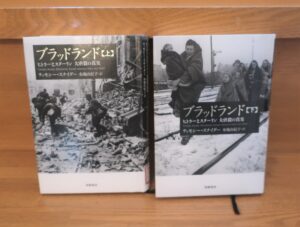
この本を読めばスターリンとナチスの大量殺害がどのような世界情勢の中で行われたのかが明らかになります。
前回の記事まででソ連における大量殺人についてお話ししました。
この本ではまずソ連のスターリンによる大粛清が語られ、そのあとにナチスによるホロコーストへの流れが語られていきます。
本当はナチスがいかにしてホロコーストへと向かって行ったのかということをこの記事でも紹介していきたいのですが、引用するにはあまりに長く、複雑になってしまうので「ぜひこの本を読んで下さい」としか言いようのないものになってしまいました。
もしその一部分だけここに引用しても逆にわかりにくくなってしまうので今まで通り気になったところを紹介していくという形はあまり適さないと判断しました。
というわけで前回紹介した箇所からしばらくは引用しません。ですが引用しないからといって重要な箇所がないということではありませんのでぜひこの本を手に取って読んで頂きたいと思います。
ブラッドランド(流血地帯)における大量虐殺の流れ
さて、今回の記事ではこの本の巻末に著者によって書かれた「要旨」を紹介していくこととします。
これが全体の流れを知る上で以上によくまとまっているので今回の記事ではそちらを見ていきたいと思います。本文の個別の箇所は見ていけませんがこちらの要旨を見ることで大まかな流れを掴むことができます。では、始めていきましょう。
第二次世界大戦以前のスターリンによる大粛清
流血地帯における殺戮は、五つの形をとった。まず、スターリンがソ連国内の植民地化を進めることによって「近代化」に着手した。グラーグと呼ばれる強制労働収容所システムを作りあげ、農業を集団化し、工場や鉱山施設や運河を建設した。農業集団化の結果、深刻な食糧難がはじまると、政府はこれを特定の集団ー主としてウクライナ人ーのせいにした。一九三〇年代はじめ、ソ連ではウクライナを中心に、五〇〇万人以上の餓死者を出した。飢餓を引き起こしたのは農業の集団化だが、餓死を引き起こしたのは政府の政策だった。
やがてソ連はテロルへと「後退」する〔革命を終了し安定をはかる方針に転じたことを指す〕。一九三七年から三八年にかけての大テロルでは、集団化の被害者である農民が、ソ連にとって最大の脅威である、と位置づけられ、飢餓とグラーグを生き延びた人々が銃殺された。同時に、ソ連指導部は特定の民族的少数派集団を敵と定めた。七〇万人近い人々がテロルで処刑されたと記録されているが、実際の人数はもう少し多かったかもしれない。これらの人々の大半は農業労働者とソヴィエト・ポーランド人だった。
筑摩書房、ティモシー・スナイダー著、布施由紀子訳『ブラッドランド ヒトラーとスターリン 大虐殺の真実』下巻P289ー290
こちらは前回までの記事で紹介した内容になります。
1939年独ソ不可侵条約の影響
一九三九年には、ドイツとソ連がポーランドを共同侵攻し、「反啓蒙主義」政策を実行した。たがいに異なるイデオロギーから似たような結論を引き出し、ドイツとソ連は一九三九年から四一年にかけておよそニ〇万人のポーランド国民を殺害した。そのほとんどは、抵抗運動を組織する力のありそうなヨーロッパ文化を代表する教養人だった。
一九四〇年の春、ソ連はカティンのほか四カ所でポーランド人将校など一万一八九二名を処刑した。これは当時ドイツが進めていた殺戮作戦と非常によく似ていた。この時期、ドイツとソ連はポーランド人一〇〇万人の強制移住も決行し、いずれも強制収容所システムをさらに拡大した。ドイツはポーランド・ユダヤ人を全員強制移送するつもりでゲットーに閉じ込めた。ゲットーは臨時の強制労働収容所と化し、何万人ものユダヤ人が飢餓や病気で死んでいった。
筑摩書房、ティモシー・スナイダー著、布施由紀子訳『ブラッドランド ヒトラーとスターリン 大虐殺の真実』下巻P290
※一部改行しました
中学の歴史の授業では1939年にナチスドイツがポーランドに侵攻したことで第二次世界大戦は始まったと私は習いました。
たしかにそれは間違いではありません。ですがドイツとソ連という関係性で見ていくと、このポーランド侵攻により第二次世界大戦が始まったという事実よりも、この年に独ソ不可侵条約が結ばれたというのが重要になってきます。
実はこの条約はただ単に互いの領土に侵略しないという取り決めだけでなく、この条約には隠されたさらに重要な目的がありました。
それがポーランドの分割支配の取り決めでした。
この条約でナチスがポーランド西側を、ソ連が東側を自国の支配下に置くことを決定したのです。
こうした独ソ間の秘密協定に基づきナチスはポーランドに侵攻したのです。
つまり、第二次世界大戦はナチスのポーランド侵攻に原因があるとされますが、実はこの時同時にソ連もポーランドに侵攻していたのです。これは後に連合国側に立って戦うソ連としてはあまり都合のよい話ではありません。ブラッドランドでの大量殺人はドイツとソ連の関係性によるものだったというのがこうしたことからも見えてきます。
上の引用にも出てきましたカチンの森事件については以前の記事「V・ザスラフスキー『カチンの森 ポーランド指導階級の抹殺』~ソ連が隠蔽した大量虐殺事件とは」でも紹介しましたのでそちらもご参照ください。

1941年、ナチスドイツが条約を破棄しソ連に侵攻。独ソ戦の開始。ヒトラーの夢
一九四一年六月、ドイツが同盟を破棄してソ連に侵攻したあとは、敵同士となった両国が「交戦国間の共犯行為」によって、民間人を殺害した。ドイツ占領下のソヴィエト・ベラルーシでは、ソ連がパルチザン活動を支援し、ドイツがそれに対抗して三〇万人以上を殺した。これらの大量殺人はどう見ても報復とは言えない。
ついにはドイツがべラルーシ人の女性と子供たちを厄介者として銃殺し、男たちを奴隷労働者として捕らえはじめた。ワルシャワでは、ソ連軍がはじめはポーランド人の蜂起を支持したが、自分たちは関わらずに高みの見物を決め込んだ。ドイツ側は一〇万人以上のポーランド人を殺害し、ワルシャワの街を壊滅させた。
ヒトラーは、ソ連とポーランドを植民地としたうえで非近代化することを夢見ていた。これにより数千万人の命が奪われるはずだった。ナチス指導部は、東部国境地帯の人口を大幅に減らし、非工業化することにより、支配者民族であるドイツ人が入植する農業地帯に変えようともくろんだ。
この目標には四つの段階があった。まず第一は、一九四一年夏に「電撃勝利」をおさめ、二年前のポーランドと同様、ソ連を崩壊させることだ。成功すれば、ドイツはポーランド、ベラルーシ、ウクライナ、ロシア西部、それにカフカス地方を完全に掌握することになる。
第二段階では、「飢餓計画」を決行し、一九四一年から四二年にかけての冬にこれら地域の住民およそ三〇〇〇万人を餓死させる。食糧はドイツやヨーロッパ西部へ送るのだ。
第三段階では、ソ連の飢餓を生き抜いたソヴィエト・ユダヤ人、ポーランド・ユダヤ人、ドイツの統治下にあるユダヤ人を、「最終解決」によりヨーロッパから排除する。
第四段階では、戦勝後数年のうちに、「東方総合計画」に沿って、生き残っている住民を強制移住し、殺害し、奴隷化し、あるいは同化させ、東欧にドイツ人入植者を再定住させる。他民族の死に場所がドイツの生存圏となるはずだったのだ。
筑摩書房、ティモシー・スナイダー著、布施由紀子訳『ブラッドランド ヒトラーとスターリン 大虐殺の真実』下巻P290ー291
※一部改行しました
ヒトラーはソ連を叩けばあっという間に崩壊し、戦争は終結すると考えていました。そして戦争の終結後はなんと、3000万人以上の人間を餓死させ、植民地化する計画すら考えていたのでした。これがもし実行されたかと思うとぞっとします・・・
ヒトラーの誤算。ドイツの苦戦とロシアの反撃。絶滅計画の修正
ソ連が倒れず、電撃勝利が果たせそうにもないことがわかると、ヒトラーとドイツの指導部は、残った三つの計画をこの新局面に合わせて修正し、当初の想定より少ないおよそ一〇〇〇万人を殺害した。
「飢餓計画」をもとの形で実行することを断念し、ドイツが完全な支配下に置いた地域のみを対象とした。その結果、包囲されたレニングラードで一〇〇万人が故意に餓死させられ、ソヴィエト人捕虜三〇〇万人以上が飢えと放置により死亡した。
戦争はさらに続き、やがてドイツは捕虜の大半を餓死させずに強制労働に就かせるようになった。壮大な植民地構想、「東方総合計画」は、全面的な勝利をおさめないかぎり実行に移せなかったが、そのような勝利の日はやってきそうになかった。
計画は占領下ポーランドのいくつかの地域で試行され、ドイツ人だけの植民地を建設するためにポーランド人が強制移住させられた。その根本的なコンセプトは、一九四四年夏のワルシャワ蜂起を受けてドイツがワルシャワ市を破壊する決断を下したところにもはっきり見てとれる。「飢餓計画」でも「東方総合計画」でも、大量殺人の規模を縮小して遅らせる必要があった。植民地化という全体的な目標は決して放棄されなかったのだ。
筑摩書房、ティモシー・スナイダー著、布施由紀子訳『ブラッドランド ヒトラーとスターリン 大虐殺の真実』下巻P291-292
※一部改行しました
ヒトラーは冬を迎える前にソ連を完膚なきまでに倒す計画でした。
なぜ冬までなのか。
それはロシアの恐るべき冬将軍の存在があるからでした。
マイナス40度にもなる極寒と猛吹雪、そして底なし沼のようなぬかるみだらけの道で行軍もままならなくなります。
1812年にはあの無敵のナポレオンもおよそ60万人以上の大軍を率いてモスクワへ侵攻しましたがこの冬将軍に完膚なきまでに敗北しています。
ヒトラーも当然ナポレオンの敗北を知っています。いや、むしろ意識しすぎなくらい意識しています。だからこそ冬までに電撃勝利を収めねばならぬと決意していたのです。
しかしヒトラーの見通しは明らかに甘かったことが露呈します。無謀な作戦や、判断ミスなども相次ぎ恐れていた冬がやってきます。この時までにソ連を倒せなかった時点でヒトラーの敗北はかなり濃厚なものになっていたと言えるかもしれません。
ナポレオンのモスクワ遠征や上の引用にあるレニングラード包囲については以下の記事をご参照ください。

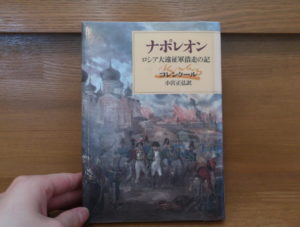

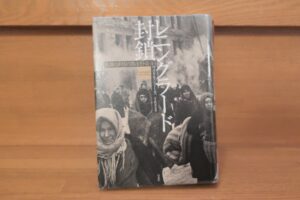
ユダヤ人問題の「最終解決」としての大量殺人ーアウシュヴィッツ、トレブリンカ、ベウジェツなどの絶滅収容所
これに対し、「最終解決」はできるだけ徹底しておこなわれた。もともとは戦後に実行するはずだったが、一九四一年後半に戦争が計画通りに進まないことがはっきりしてくると、ヒトラーは自分が最終解決の即時開始を望んでいることを明らかにした。
そのころにはすでに、四通りの強制移住による最終解決策が提案され、実行不可能であることがわかっていた。ソ連への侵攻とその失敗は、どうすればユダヤ人をヨーロッパから排除できるかを示してみせた。その方法とは、大量殺人だった。
もともとは政敵排除を任務としていた親衛隊の特別行動部隊がユダヤ人の銃殺に使われた。そして当初は占領下ソ連のパトロールを任務としていたドイツ秩序警察の警察大隊が大量殺人作戦に使われた。一九四一年十二月、ヒトラーがドイツ支配下の全ユダヤ人を絶滅させたいとの意志表示をしたころには、すでに大量殺人の新技術が実用段階に入っていた。
一酸化炭素によって窒息死させる方法は、最初に「安楽死」プログラムで使用され、占領下ソ連でガス車に応用され、やがては占領下ポーランドに建設されたガス殺施設で使われることになった。アウシュヴィッツの強制労働収容所に死の工場が増設されると、一酸化炭素ではなくシアン化水素が使われるようになった。
占領下ポーランドのユダヤ人は強制移住させる予定ですでにゲットーに集められていたが、移住ではなく、べウジェツ、ソビブル、へウムノ、トレブリンカ、アウシュヴィッツ、そしてマイダネクに送られてガス殺されたのである。
筑摩書房、ティモシー・スナイダー著、布施由紀子訳『ブラッドランド ヒトラーとスターリン 大虐殺の真実』下巻P292
※一部改行しました
ユダヤ人の大量殺人は最初から計画されていたのではなく、ソ連との戦況が悪化し当初の計画通りにいかなかったため、それを打開するために「効率的に大量殺害できる絶滅収容所」を作ることになっていったと著者は述べます。
このように、ナチスのホロコーストは最初から計画されていたのではなく、独ソ戦の経過に大きな影響を受けてその内容が変化していったのでありました。
続く
Amazon商品ページはこちら↓
ブラッドランド 上 ――ヒトラーとスターリン 大虐殺の真実 (ちくま学芸文庫 ス-29-1)
次の記事はこちら

前の記事はこちら

「『ブラッドランド ヒトラーとスターリン 大虐殺の真実』を読む」記事一覧

関連記事




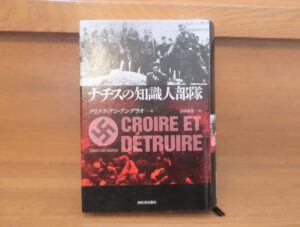
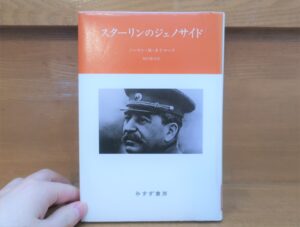
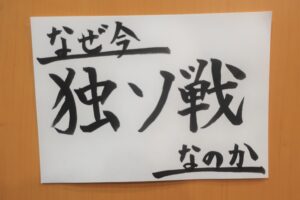
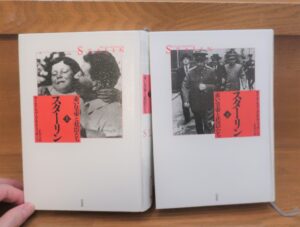
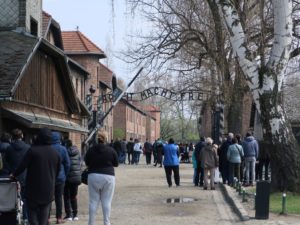


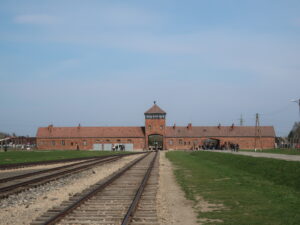



コメント